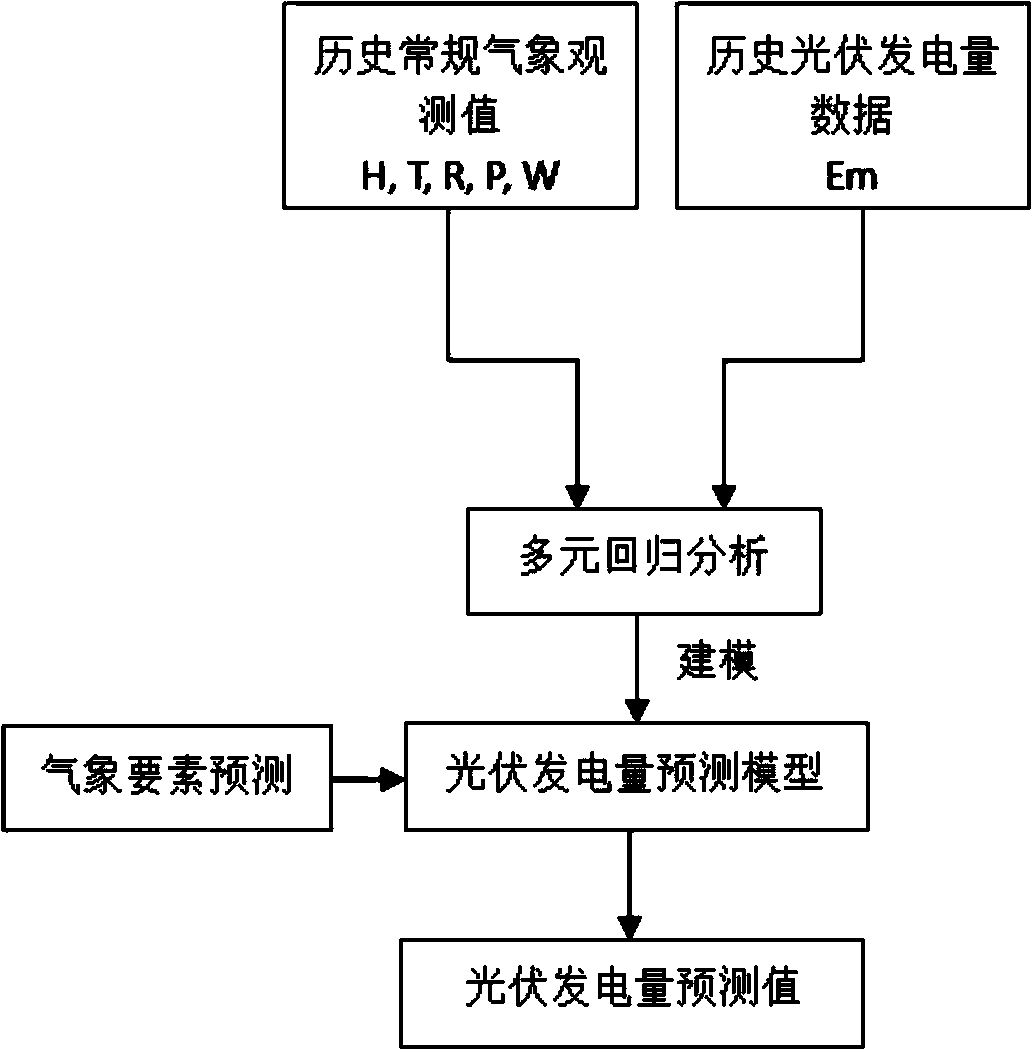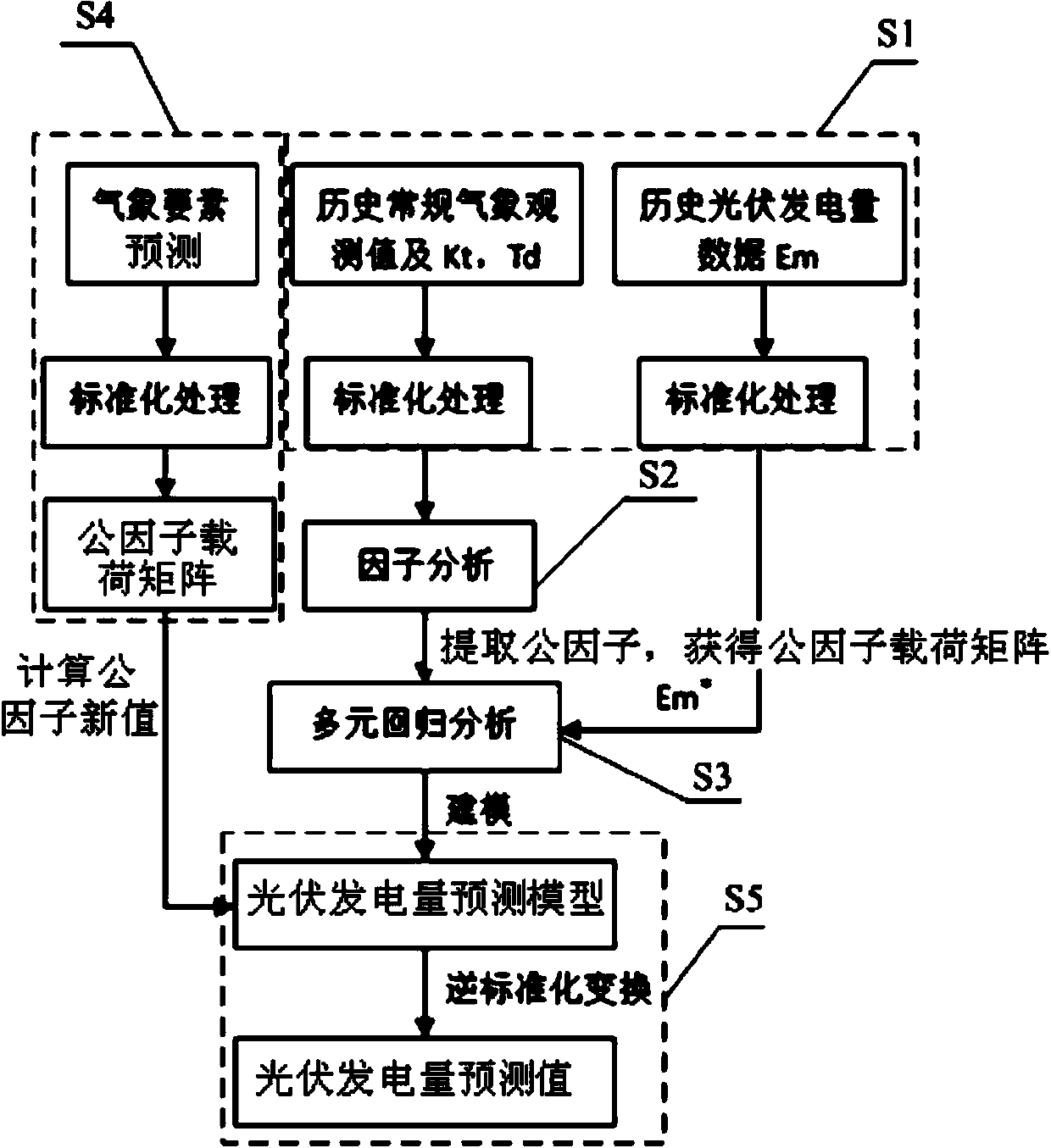Method for predicting daily generating capacity of grid-connected photovoltaic power station based on factor analysis
A factor analysis, photovoltaic power plant technology, applied in forecasting, instrumentation, data processing applications, etc., can solve the problem that photovoltaic power generation forecasting methods are difficult to meet the practical, simple and predictable requirements of photovoltaic power plants and power systems, neural network calculations are complex, It can not be obtained in practice, etc., to achieve the effect of improving the prediction accuracy, simplifying the algorithm and modeling, and improving the prediction effect.
- Summary
- Abstract
- Description
- Claims
- Application Information
AI Technical Summary
Problems solved by technology
Method used
Image
Examples
Embodiment Construction
[0043]The present invention will be described in detail below in conjunction with the accompanying drawings and specific embodiments.
[0044] Such as figure 2 As shown, taking the daily photovoltaic power generation of a grid-connected photovoltaic power station in Wuhan as an example, a method for predicting the daily power generation of a grid-connected photovoltaic power station based on factor analysis includes the following steps:
[0045] Step S1: Obtain historical conventional meteorological observations, daily temperature range Td, daily clarity index Kt, and historical photovoltaic power generation data Em in the photovoltaic power plant database, and perform variable correlation analysis (as shown in Table 1, using Poisson correlation Analysis) and standardized processing; Meteorological data include daily total solar radiation H, sunshine hours S, daily maximum temperature Tmax, daily minimum temperature Tmin, daily average temperature T, daily relative humidity R...
PUM
 Login to View More
Login to View More Abstract
Description
Claims
Application Information
 Login to View More
Login to View More - R&D
- Intellectual Property
- Life Sciences
- Materials
- Tech Scout
- Unparalleled Data Quality
- Higher Quality Content
- 60% Fewer Hallucinations
Browse by: Latest US Patents, China's latest patents, Technical Efficacy Thesaurus, Application Domain, Technology Topic, Popular Technical Reports.
© 2025 PatSnap. All rights reserved.Legal|Privacy policy|Modern Slavery Act Transparency Statement|Sitemap|About US| Contact US: help@patsnap.com



